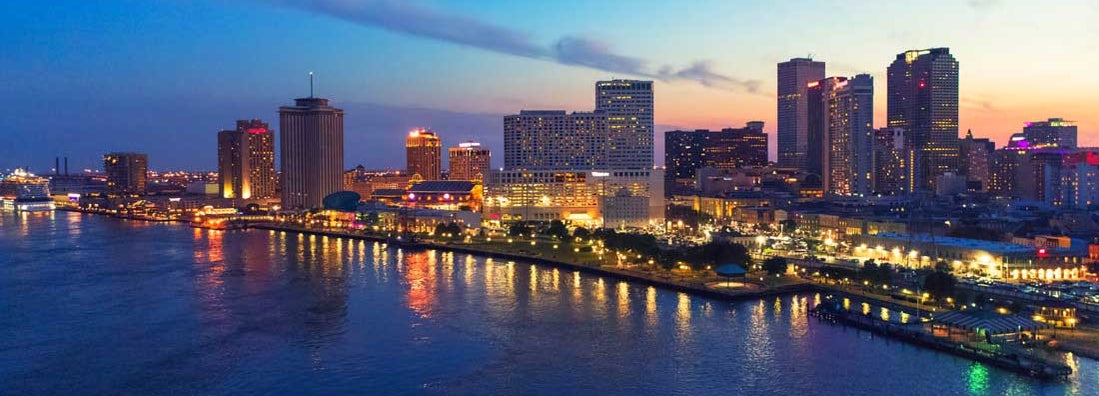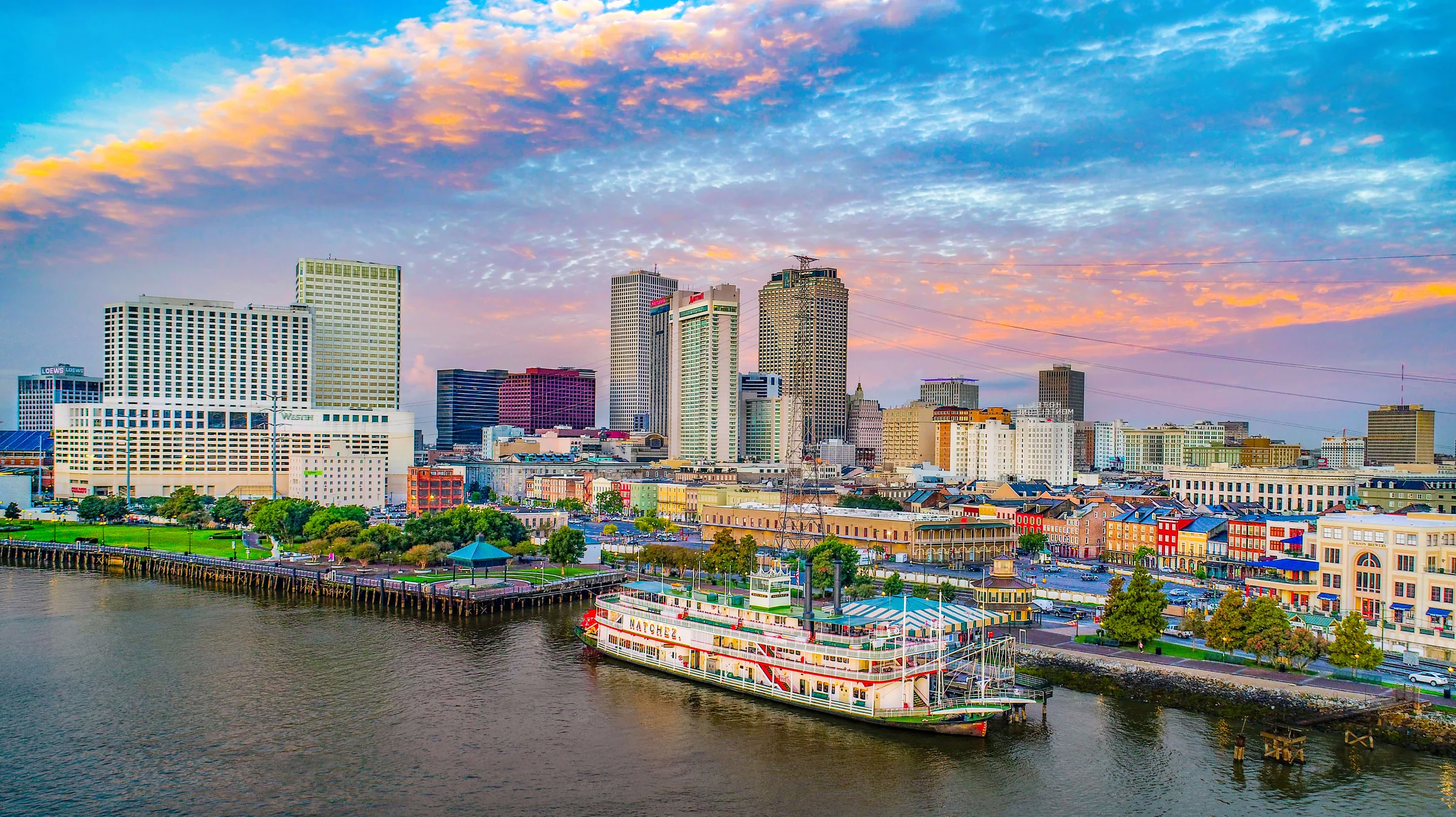



Louisiana is a southeastern U.S. state on the Gulf of Mexico. Its history as a melting pot of French, African, American and French-Canadian cultures is reflected in its Creole and Cajun cultures. The largest city, New Orleans, is known for its colonial-era French Quarter, raucous Mardi Gras festival, jazz music, Renaissance-style St. Louis Cathedral and wartime exhibits at the huge National WWII Museum. ― Google
Best Time to Visit:
February to May — Ideal for festivals like Mardi Gras, and pleasant spring weather.
October to early December — Mild temperatures, fewer crowds, and fall festivals.
Summer (June to September) — Hot and humid, with hurricane risk, but also offers lower hotel rates.
How to Get There:
By Air:
Louis Armstrong New Orleans International Airport (MSY): Main airport for New Orleans and southeastern Louisiana.
Baton Rouge Metropolitan Airport (BTR): Serves the capital region.
Other regional airports include Lafayette (LFT) and Shreveport (SHV).
By Car: Interstates I-10, I-20, I-49, and I-55 run through the state.
By Train: Amtrak operates routes to New Orleans via the City of New Orleans and Sunset Limited lines.
Top Attractions:
French Quarter (New Orleans): Historic district with music, nightlife, and architecture.
Mardi Gras World (New Orleans): Behind-the-scenes look at Mardi Gras floats and traditions.
Bourbon Street: Famous for nightlife, bars, and music.
Garden District (New Orleans): Elegant mansions and oak-lined streets.
National WWII Museum (New Orleans): World-class museum on U.S. military history.
Swamp Tours: Explore bayous by airboat or pontoon and spot gators.
Cajun Country (Lafayette): French-speaking culture, music, and food.
Plantation Homes: Tour historic sites like Oak Alley and Laura Plantation.
Avery Island: Home of Tabasco hot sauce and jungle gardens.
Shreveport’s Riverfront & Casinos: Shopping, entertainment, and river cruises.
Activities to Do:
Attend Mardi Gras or a local festival (e.g., French Quarter Fest, Jazz & Heritage Festival).
Take a jazz or steamboat cruise on the Mississippi River.
Explore historic cemeteries like St. Louis Cemetery No. 1 in New Orleans.
Try a swamp tour for gator-spotting and learning about wetland ecosystems.
Join a cooking class to make gumbo, jambalaya, or pralines.
Experience live music in Frenchmen Street, Lafayette, or Baton Rouge.
Visit art galleries and museums in New Orleans, Baton Rouge, or Natchitoches.
Hike or bird-watch in Jean Lafitte National Historical Park or Kisatchie National Forest.
Fish or boat in Louisiana’s lakes and bayous.
Accommodation:
Boutique Hotels: Especially in New Orleans’ French Quarter and Garden District.
Historic Inns & B&Bs: In small towns like Natchitoches or plantation areas.
Casino Resorts: Found in Shreveport, Lake Charles, and Baton Rouge.
Chain Hotels: Widely available throughout the state for every budget.
Vacation Rentals: Great for families or longer stays, especially near New Orleans or Lafayette.
Camping & Cabins: Available in state parks and along lakes.
Food and Restaurants:
Famous Dishes:
Gumbo: A hearty stew with seafood or meat.
Jambalaya: Rice dish similar to paella.
Po’boys: Overstuffed sandwiches on French bread.
Beignets: Fried dough with powdered sugar (must-try at Café du Monde).
Crawfish Étouffée: Rich, buttery seafood dish.
Regional Flavors:
Cajun cuisine in Lafayette and rural south Louisiana.
Creole cuisine in New Orleans — more European-influenced.
Top Restaurants:
Commander’s Palace (New Orleans): Upscale Creole dining.
Dooky Chase’s (New Orleans): Historic soul food spot.
Cochon (New Orleans): Rustic Cajun dishes with a modern twist.
Herby-K’s (Shreveport): Known for shrimp buster po’boys.
Seafood & Oysters: Abundant throughout coastal Louisiana.
Boudin & Cracklins: Found in gas stations and local shops around Cajun country.
Local Culture:
Multicultural Roots: French, African, Spanish, Native American, and Caribbean influences blend in language, music, food, and faith.
Festivals Year-Round: From Mardi Gras to crawfish boils and zydeco fests.
Strong Musical Heritage: Birthplace of jazz, and home to blues, zydeco, Cajun, and gospel music.
Language & Dialects: Cajun French and Creole dialects still spoken in rural areas.
Spiritual Traditions: Catholicism is prominent, with visible expressions like religious parades and voodoo influence in New Orleans.
Southern Hospitality: Warm, lively, and community-oriented.